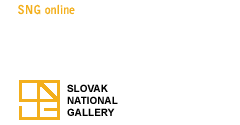
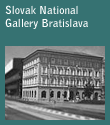 |
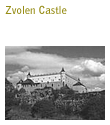 |
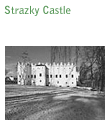 |
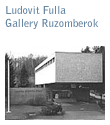 |
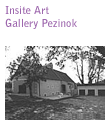 |
|



2010
2009
| Juraj Bartoš / Press Release 1. October 2009 |
|
PRESS RELEASE - MUDROCH & MUDROCH The Dialogue That Never Took Place 17. September 2009 Mudroch & Mudroch The Dialogue That Never Took Place Exhibition Curators: Katarína Bajcurová, Marián Mudroch 18 September – 8 November 2009 SNG Esterházy Palace, Námestie Ľ. Štúra 4, Bratislava Daily 10 a.m. – 5.30 p.m. The exhibition Mudroch & Mudroch, with the subtitle, The Dialogue That Never Took Place, introduces the work of Ján Mudroch, the father (1909 – 1968) and his son Marián Mudroch (1945) in a way we do not know them. Each of them – in his time – belonged (belongs) to the significant representatives of modern (contemporary) Slovak art. Marián Mudroch came up with the primary idea of the confrontation of their work. He shared his obsession with us which had smoldered within for quite a long time, to try to show the father through the eyes of the son, to select that which survived in his work, to contemplate on the source of his strength and the essence of his artistic talent, until naturally, he ran into the legendary “tough edges of reality”. At the same time, he was tempted by a different idea, the confrontation of his own work with the work of his father, which, coincidentally, never took place in the course of his life. They avoided the traditional generation conflict because Ján Mudroch left this world when his son Marián, as an artist, was still in his birth “phase.” He was artistically developing and growing for many years, but he – alone inside himself and for himself – kept the dialogue with him in reverse order, which gradually took the form of the dialogue of a “mature” son with his “young” father. The growingly urgent internal challenge to attempt to visualize, to materialize this fictitious dialogue that never took place in reality, through works of art, brought him to the Slovak National Gallery. Moreover, he introduced us to an extensive set of drawings from the inheritance of Helena Mudrochová, the artist’s wife, some of which had never been presented. This is neither a simple father and son double exhibition, nor a traditional retrospective, but an effort to grasp the finer, more polysemic links between the art of two people of one blood, but each cast from a different artistic “mould”. Last but not least, in 2009 we commemorate the anniversaries of significant Slovak artists belonging to the Generation of 1909, the generation which, especially in the 1940s, significantly affected the fate of modern Slovak art not only from the aspect of forming a new artistic perception of the world, but also in expressing anti-fascist standpoints. Ján Mudroch was one of the key figures of this generation. In addition to others, he was cardinally instrumental in the birth of the Slovak National Gallery and thanks to his merits, our institution has existed for sixty plus one years. We have decided to dedicate this exhibition to him as an expression of our respect to this artist and man who can not be overlooked. Despite the fact that both of them, Ján Mudroch and Marián Mudroch, are artists of different historic times and different fine art natures, they are connected by certain elements in their works. The moment of the foreground, the antithesis, must be present in the continuity of generations in art in order to fulfill its inner sense (a similar thought background was also probably behind the origin of Konvergencie (Convergences) from 1976, the first series of prints of Marián Mudroch, where he confronted the offset model of Rembrandt’s self portrait with a linear structure, which was created by reducing his own father’s self-portrait). While determining the art type, the passionate, sensual, eruptive and emotional attributes were most frequently associated with the father; in the case of the son it was the other way round. He was probably more frequently described as an existential intellectual and aesthete who contemplates on and thinks long and hard about his work (not without the influence of eastern cultures, science and philosophy) although in his life he was quite familiar with the hedonistic existence. It would also be an over-simplification to claim that the father only created based on emotional pressure – because what other traits than deliberation and rational calculation could lead him to the constant “improving” of his paintings? At first sight, it might seem that color is lacking in the work of the son, but it is not like that, although his relationship to color and its facture is nowhere near as elemental and temperamental as in the case of the father. For black is also a color (and the father also liked to work with it) because for the son, white and black became the “absolute” colors capable of “concentrating energy”. They were both fascinated by light as a category of fine art expression, and all that mystery that lay behind it. While with the father light was the function of color through which he palpated the plasticity and volume of shapes either through soft twilight or sometimes through a more contrasted “lighting” of shapes and forms, the son naturally went further. He is interested in light as energy “creating the existence of objects – light as vibration, trembling, undulation” (Juraj Mojžiš), he does not hesitate even to draw with light itself, with a laser beam or neon. It is strange that in terms of motivation, the work of both artists is relatively close; we find here the concentration on several motifs and themes which both vary or multiply “serially”. And what appears in the lapse of time as probably their main shared interest and the creative common denominator of their work is drawing – drawing as intention, plan, and concept. After all, not only their already mentioned ability to be involved in the transformation of public matters, but their long pedagogical careers are what join them over the years. How would the father accept his son’s work if he were destined to see it with his very own eyes? They would definitely have several passionate disputes. But the further search for an answer to this fictitious question would be equally fictitious. So we must only believe that in our dialogue – in our exhibition fiction – their works will eventually find agreement, that they will harmonize their “internal voices”. Or as Marián Mudroch likes to remark regarding his and his father’s work – by searching for “ciphers of transcendence”... Ján Mudroch, Professor, Distinguished Artist He was born on March 28, 1909 in Sotina, near Senica and died on February 4, 1968 in Bratislava. He studied at the G. Mally Private School in Bratislava (1926), the School of Industrial Arts (1930) and the Academy of Visual Arts in Prague (1931 – 1937, under prof. J. Obrovský, from the academic year 1932/1933 under prof. W. Novak). He worked at the Department of Drawing and Painting at the Slovak College of Technology in Bratislava (1939 – 1941). He was the co-founder of the Slovak National Gallery and the Academy of Fine Arts, where he became its first rector (1950 – 1952) and the head of the Department of Figural Painting. He was a leading figure in the avant-garde movement in the circle of neo-realist artists in the first half of the 1940s and he was involved in organizing post-war fine art life. Marián Mudroch, Associate Professor, Distinguished Artist He was born on June 25, 1945 in Bratislava. He studied at the School of Arts and Crafts (1961 – 1965, Department of Applied Photography) and the Academy of Fine Arts in Bratislava (1965 – 1971, Department of Glass in Architecture, under doc. V. Cigler, 1967 – 1968, Department of Figural Painting, under prof. J. Mudroch). He worked as pedagogue at an extra-curricular art school (1973 – 1983) the School of Arts and Crafts, the J. Vydra School of Applied Fine Arts in Bratislava (1983 – 2003) and the Academy of Fine Arts and Design in Bratislava (2003 – 2008, from 2007 as Associate Professor). He was a representative of the unofficial fine art scene in the 1970s and 1980s and a member of the Avance – Retard group (1989). He lives in Bratislava. up |
|


© 2005 Slovak National Gallery. All Rights Reserved. Web satori.






























